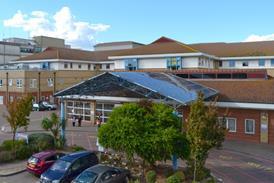THERE IS A WAY BETWEEN DISTRICT GENERAL AND COTTAGE HOSPITAL...
I was interested to see the article on Kent and Canterbury Hospital (News, page 7, 26 February). Across the UK there are many proposals for reconfiguring acute services, and local communities are understandably concerned about the potential loss of their district general hospital. There are, however, successful and proven ways ...
You need to be a subscriber to read more

Subscribe for unlimited access
With a HSJ subscription you’ll unlock:
- All HSJ news by sector, topic & region
- Breaking News announcements
- App for mobile and offline reading
- Comment and Daily Insights newsletters
- Regional roundup newsletters
- Unrestricted access to ‘Ask HSJ’ - AI assistant - AI assistant
- 10 expert briefings every fortnight (Premium only)
Already a subscriber? Sign into your account here




















